It’s easy to get lost among the things to do in Luxor, Egypt. But whether you’re spending one day or several, these things should be on your itinerary.
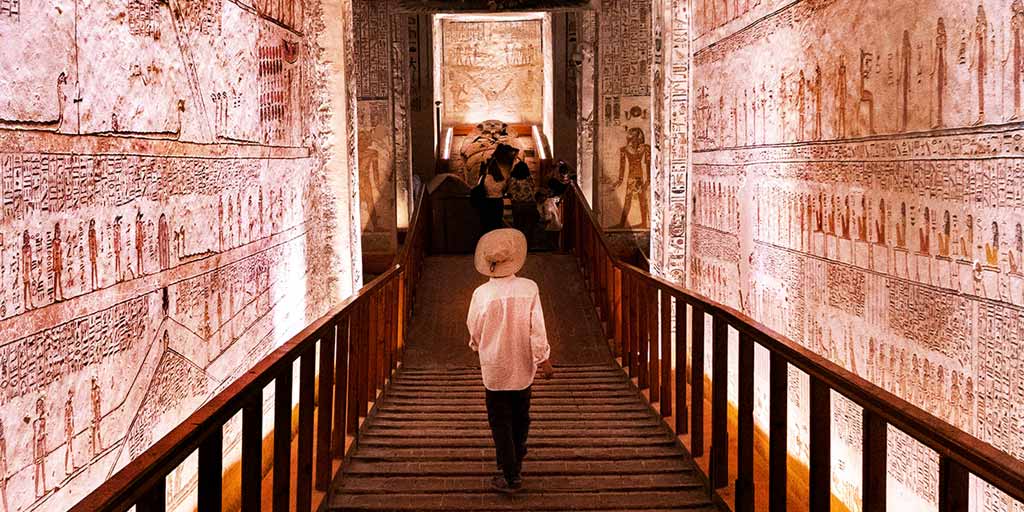
Our day in Luxor all started with an early morning wake-up call towards the tail end of our Nile River cruise. We had spent the past few days cruising along one of the world’s most famous rivers, experiencing the magic of destinations such as Aswan, Abu Simbel, and Kom Ombo. But all of these incredible Egyptian destinations were just a taste test for all of the awesome things to do in Luxor, Egypt.
Even compared to some of the most awe-inspiring places to visit in Egypt, Luxor is in a world of its own. Once upon a time, what is now Luxor was once one of the greatest cities of the Middle and the New Kingdom. Generations of ancient pharaohs built up what is now one of the greatest networks of tombs in the country.
From the massive pillars of the Karnak Temple to the mummified remains of the boy-king Tutankhamun, there are more places to visit in Luxor than seem possible for a city of less than half a million people. This majestic city offers everything that a traveler to Egypt could hope for. Whether you’re looking to spend one day in Luxor or more, these are the things you must include in your Luxor itinerary.
About Luxor Egypt
Table of Contents
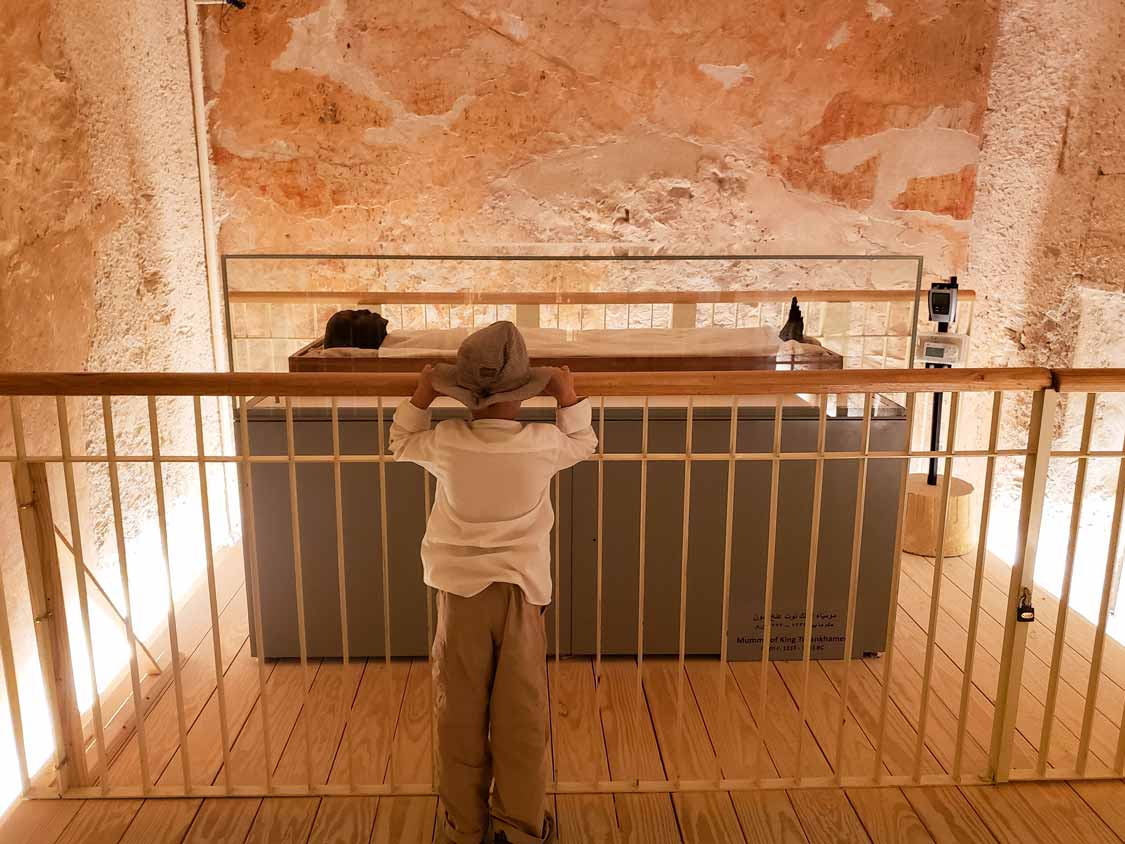
Modern-day Luxor is a mid-sized Egyptian city. It features offices, fast-food joints, and everything you would expect in a city booming with tourists. But beneath its dusty surface, the remnants of what the ancient Greeks called ‘Thebes’ and the Egyptians called ‘Waset’ are waiting to be explored.
In ancient times, Luxor was, at times, Egypt’s capital. At times it served as Egypt’s capital, and spent time as one of its largest cities. From 1,500 to 1,000 B.C., Luxor was among the most spectacular cities in the world. During ancient times, it was deemed to be the house of the god Amun, whose temples can be found everywhere from the Siwa Oasis to Cairo.
As the region converted to the ‘New Kingdom,’ it was Luxor where Egypt’s rulers chose to be buried. And the place they chose was the epic tomb network known as the Valley of the Kings. But the Valley is just one of the many things to do in Luxor, Egypt. The popularity of the kings led to even more Luxor temples and tombs, including the popular Karnak and Luxor temples, the Valley of the Queens, and the temple of the King Queen Hatshepsut.
Luxor is divided into two areas, divided by the Nile River. The East Bank is where you’ll find the Karnak Temple and the Luxor Temple, as well as many of the Luxor museums. While on the West Bank of Lux,or you’ll find the region’s greatest treasures. These include the Valley of the Kings, the tomb of Queen Nefertari, and more.
Things To Do In Luxor Egypt
When you’re exploring the most amazing places to visit in Luxor, Egypt, it’s easy to get overwhelmed. But no matter how you plan your Luxor itinerary, keep a level head. Luxor has some of the most aggressive vendors in the country. Check out our Egypt guide to learn how best to deal with them.
When you’ve got past the vendors, these incredible things to do in Luxo,r Egypt will blow your mind.
What To See On The West Bank Of Luxor, Egypt
The Valley of the Kings
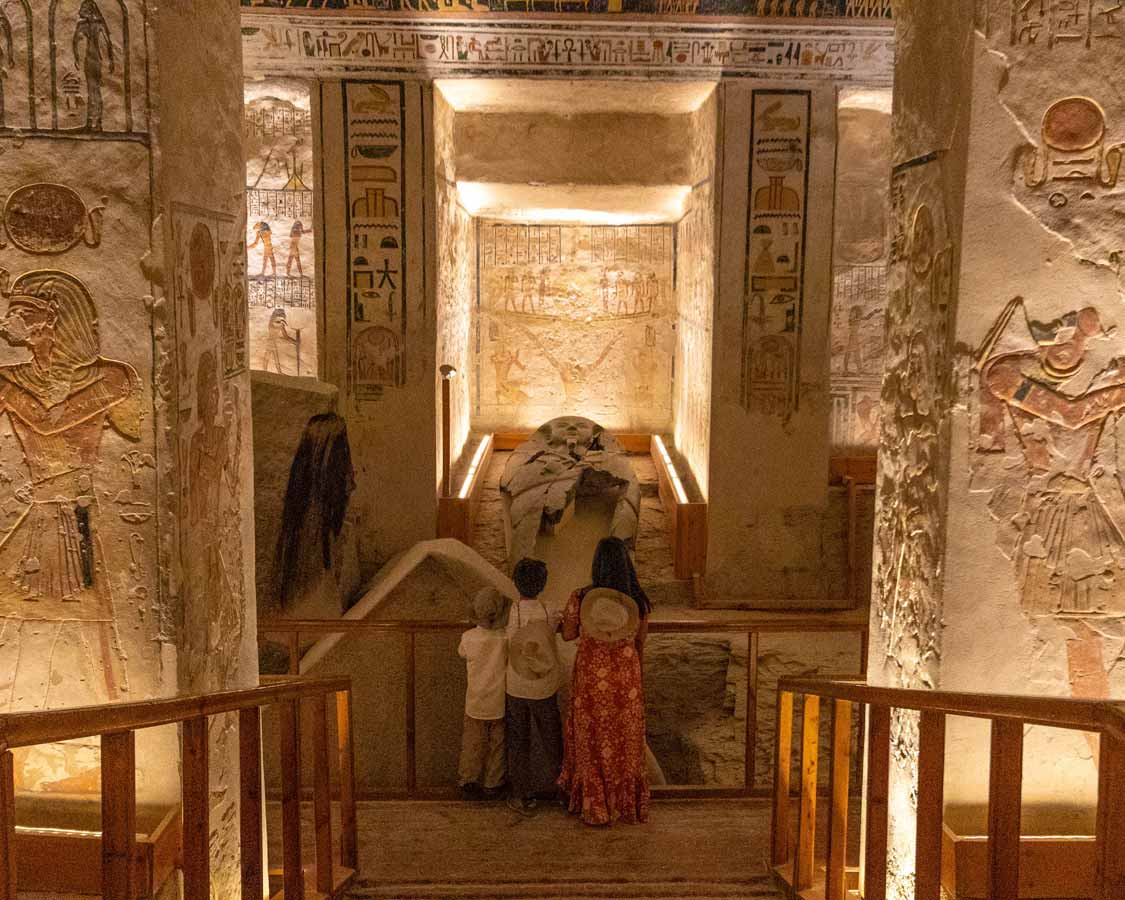
Possibly the greatest treasure in the Egyptian city of Luxor is the Valley of the Kings. During our visit to Luxor, this was our first stop. The Valley of the Kings houses the network of burial chambers for dozens of Egyptian kings. There are 63 tombs within the Valley of the Kings, many of which are adorned with intricate paintings.
The Valley of the Kings is often item number one on a Luxor bucket list. It is, at its core, the world’s most incredible cemetery. And it’s home to the most famous tomb, which holds the body of the boy-king, King Tut. King Tutankhamun’s tomb is, in all honesty, the least impressive of all of the tombs within the Valley of the Kings. But it’s the only tomb that was found fully intact. All of its treasures and the body of its pharaoh were still inside.
A ticket to the Valley of the Kings includes entry into three tombs. For an extra 50 EGP, you can include access to the tomb of King Tut. The tombs were built over the lifetime of the kings that they held. Therefore, not all of the tombs are as spectacular as the next. The tombs of Ramses III, IV, and IX are often considered the most impressive.
Temple of Hatshepsut (Temple of Deir al-Bahri)
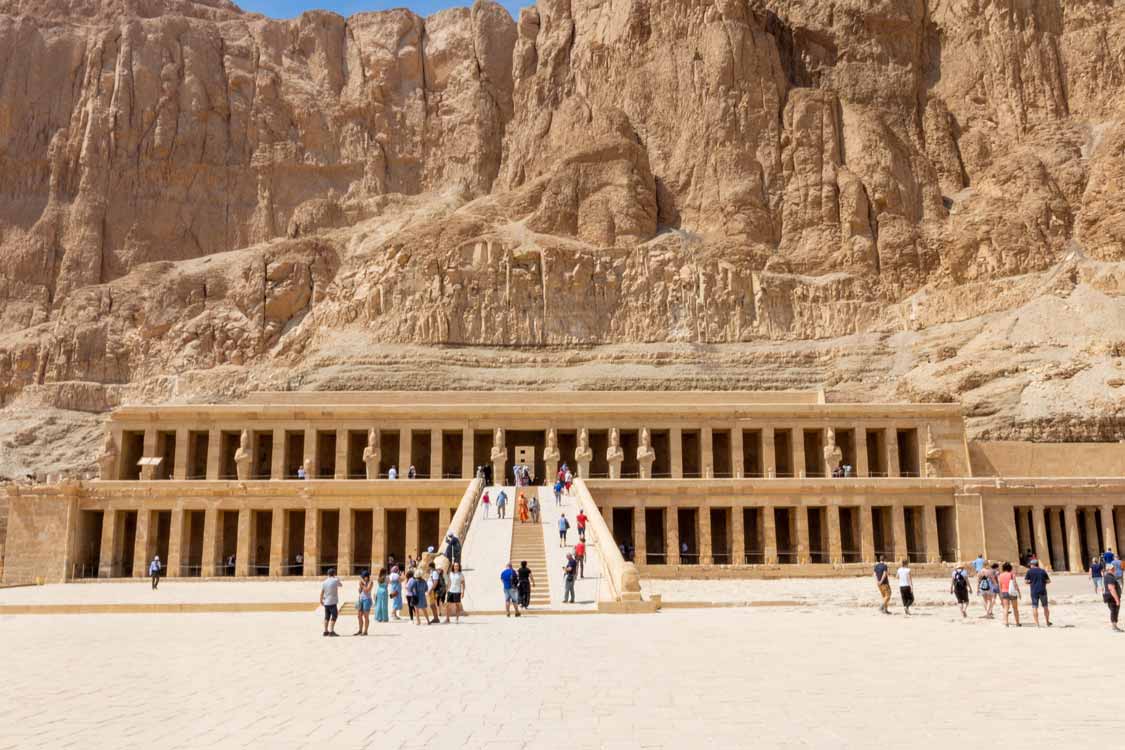
In my opinion, the Temple of Deir al-Bahri offers the biggest initial visual impact among all of the things to do in Luxor, Egypt. You arrive via a street lined with sphinxes at the multi-story, columned temple. And it’s awe-inspiring to behold. The magnificence wears off a bit as you explore what was once a grand temple to a fascinating woman.
Much of the internal artwork has succumbed to millennia of vandalism. But the architecture is still breathtaking. And amongst the worn paintings, there are glimpses of the majesty that the paintings inside once held.
Hatshepsut gained prominence as one of only a handful of female pharaohs throughout the Egyptian empire. In fact, she is often known as the Queen King. Sprinkled amongst the golden sandstone structure are depictions of her expeditions into the African Kingdom of Punt, massive statues, reliefs, and hieroglyphic inscriptions.
Visitors who pay close attention will also notice that in much of the artwork, Queen Hatshepsut is depicted as a male. This includes wearing a beard. This was to show her authority as the king of Egypt.
Valley of the Queens
For those spending just one day in Luxor, Egypt, the Valley of the Queens is often overlooked in favor of more dramatic archaeological sites. But for those with two days to spend in Luxor, this collection of nearly 80 tombs should be on your Luxor itinerary.
Although the majority of the Valley of the Queens tombs are sparsely decorated, there are a few with paintings and detailed inscriptions. You won’t find yourself wandering all of the tombs searching for the best tombs in the Valley of the Queens, though. Only a handful of the tombs are open to the public.
The most spectacular of these is the tomb of Queen Nefertari, the wife of Ramses II. Anyone who has traveled to Abu Simbel will know of the importance of this Egyptian queen. And her tomb is considered to be the most spectacular tomb on the West Bank of Luxor.
Colossi of Memnon
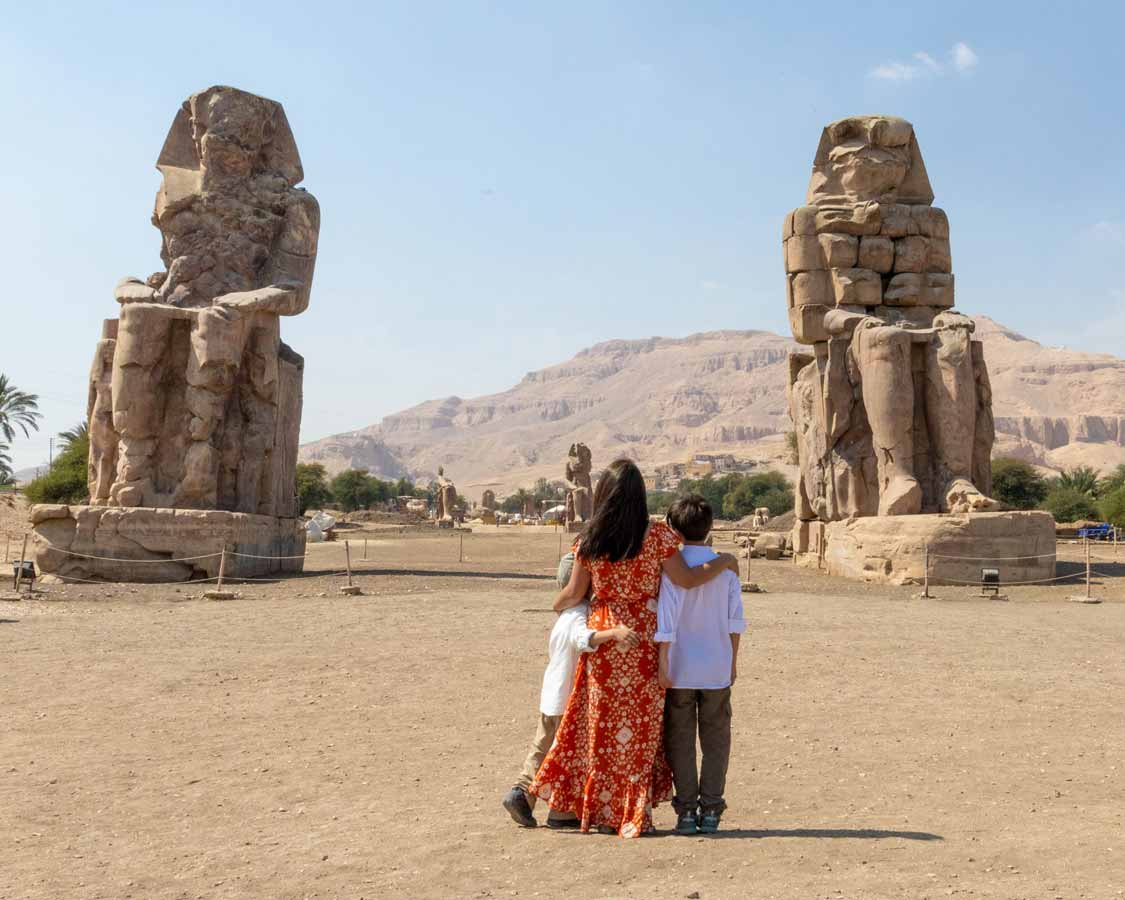
It’s impossible to miss the Colossi of Memnon as you drive the road towards the Valley of the Kings. These massive statues tower over their surroundings, even though they sit at the bottom of a large pit. The Colossi of Memnon should be on everyone’s list of things to see in Luxor, Egypt. In fact, you’d be hard-pressed not to see them.
The Colossi of Memnon depict Amenophis III seated atop a throne. Although the statues have been damaged over the centuries, they are being restored in great detail by the incredible archaeologists of Luxor. The statue on the south side is better preserved than the one on the north. It was mostly buried beneath the sand, which helped it to weather the years.
The North Colossus has been a tourist attraction since Roman Imperial times. Known as the “Musical Statue,” The North Colossi once emitted a musical note at sunrise. The area around the statue is being excavated to reveal the remains of the temple of Amenophis III.
Luxor Hot Air Balloon Ride
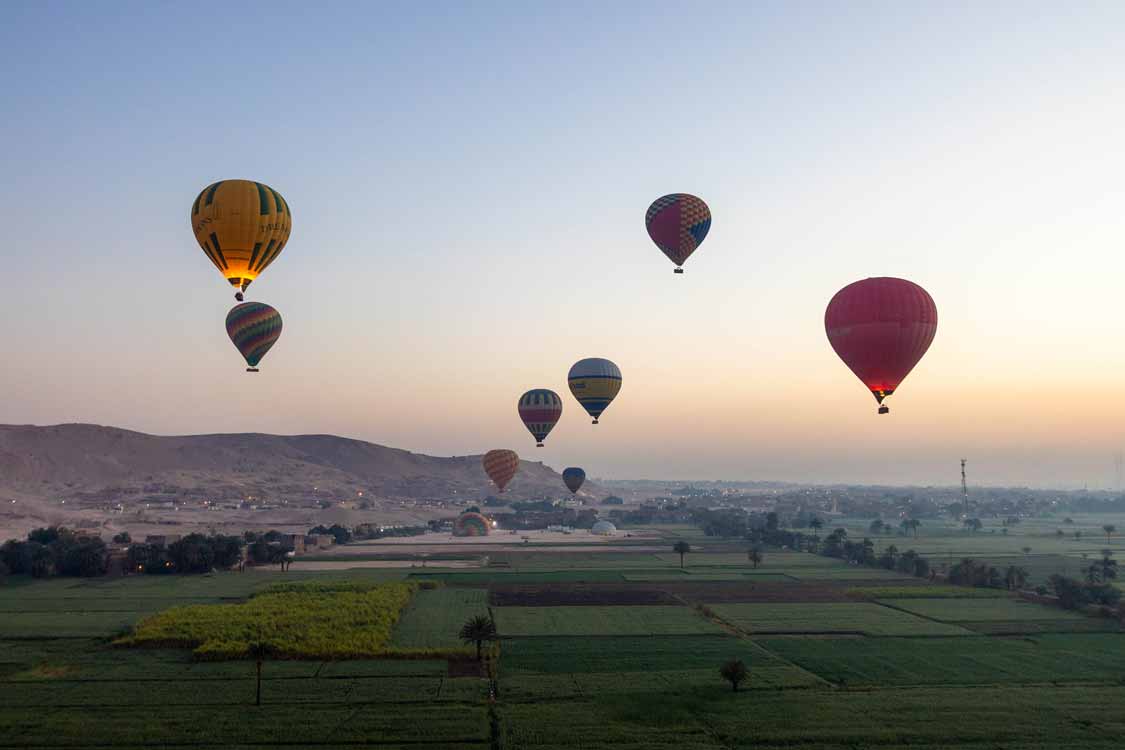
One of the most magnificent ways to experience the city of Luxor is from above. And the best way to do this is with a sunrise hot air balloon tour over the West Bank. If you don’t mind starting your day early, witnessing the sun blazing off the ancient temples of Luxor is an experience that is not easily forgotten.
The hot air balloon tours in Luxor take off from near the Valley of the Queens in the West Bank and land near the edge of the city. If you’re searching for unforgettable things to do in Luxor, Egypt, this should definitely be on your itinerary. The tours start between 5 am and 10 am, depending on the season. But I recommend timing yours to the sunrise to get the most magical experience.
You can read all about our hot air balloon tour in Luxor here.
What To See On The East Bank Of Luxor
Karnak Temple
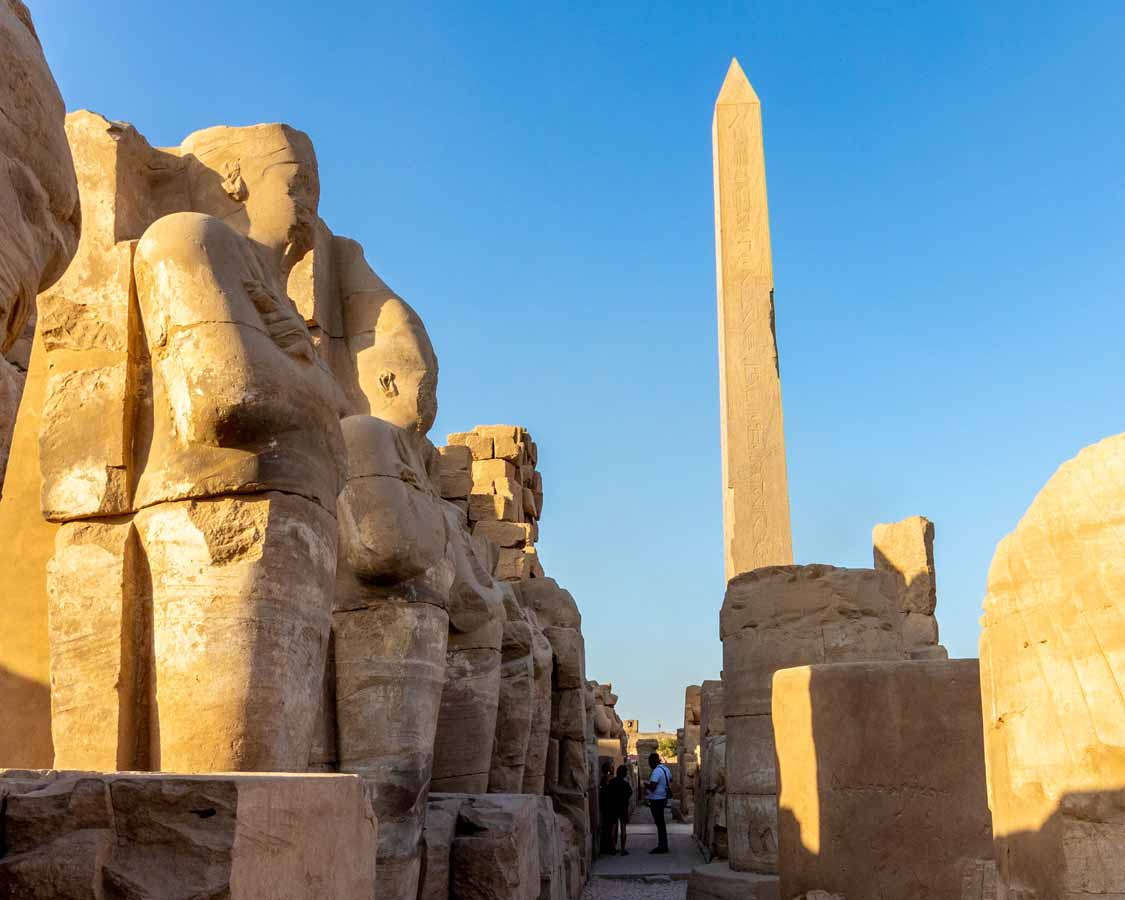
Walking among the towering columns of Karnak Temple was one of our favorite things to do in Luxor, Egypt. Often overlooked by the city’s namesake, Luxor Temple, the Karnak Temple is as monumental as it is beautiful. The temple was built by a series of Egyptian rulers. It eventually became the most important Egyptian temple during the New Kingdom.
Everything within Karnak Temple is built on an awesome scale. The columns tower up to 30 ft high. And these are dwarfed by the two massive obelisks that reach up to 80 ft into the sky. And the temple is spread across several different structures. You’ll want to set aside 3-4 hours to explore the Karnak temple thoroughly.
Don’t miss the unique ram-headed sphinxes that line the entrance to the Karnak temple. Each sphinx protects a small figure of the Egyptian god Amun between its paws. Amun’s sacred animal was the ram.
Luxor Temple
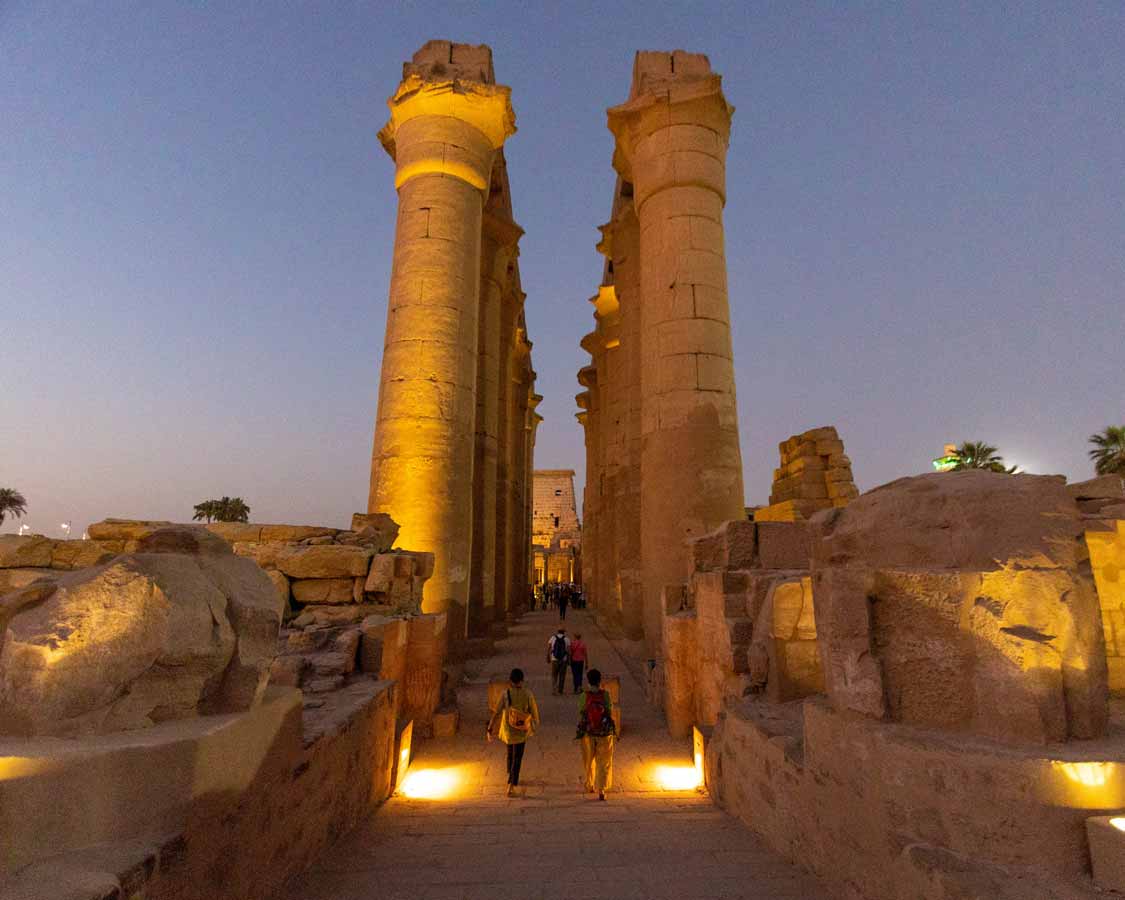
Right in the heart of downtown Luxor sits the namesake of the city, the Luxor Temple. This wild and varied Egyptian temple is the perfect example of the changing landscape of Egyptian cultures through the centuries. The Luxor temple was originally built by Amenophis III and was dedicated to Amun. But unlike the temple of Amun in the Siwa Oasis, this one was modified, expanded, and warped by a series of Egyptian rulers.
In later ages, the temple was transformed into a Christian church. Later, during the Islamic period, the church was converted into the Mosque of Abu el-Haggag. That mosque is still an active part of the existing Luxor temple to this day. This class of modern and ancient makes this one of the coolest things to do in Luxor, Egypt.
In ancient times, two massive obelisks welcomed those entering the temple. One of these was gifted to France. It can now be found at the Place de la Concorde in Paris. The true modern feature of the Luxor Temple is how elegantly it’s lit up at night. This subtle but attractive lighting has made a visit to Luxor Temple one of the best attractions in Luxor, Egypt, at night.
Museum of Luxor
In a country full of legendary museums, the Museum of Luxor is considered to be among the best. The museum in Luxor should be on everyone’s Luxor, Egypt, things to see list. You’ll find artifacts dating back to the ancient city of Thebes, right up to ones from the city’s recent history.
And while many of these artifacts would be a premier exhibit at many museums around the world, the prime attraction at the Museum of Luxor is the Royal mummies of Ahmose I, and the remains of what is believed to be Ramses I. These attractions can be found on the ground floor of the Luxor Museum.
And while the mummies in Luxor alone are worth adding to your Luxor itinerary, make sure to include a visit to the museum’s second floor. Here you’ll find an entire range of treasures pulled from the tombs of Luxor and throughout Egypt. It’s one of the best ways to get an idea of just how incredible tombs such as those in the Valley of the Kings were before they were looted.
Other Incredible Things To See In Luxor, Egypt
With the list of things to do in Luxor, Egypt, being so extensive, it’s no surprise that a number of things to do and see get left behind. Most visitors spend just one or two days in Luxor, so it can be hard to pack everything in. But for those willing to spend a few days or more in Luxor, these awesome places to visit should be added to your itinerary.
Medinet Habu
Among the other things to do in Luxor, Egypt, is Medinet Habu. This West Bank temple has some of the most gorgeous paintings in the entire city. Medinet Habu, which dates as far back as the 18th dynasty, has temples to various gods and pharaohs. Another notable feature is the 12-foot battlement that surrounds the complex.
Tombs of the Nobles
Among the many tombs of Luxor, Egypt, the Tombs of the Nobles are worth adding to your Luxor things-to-do list. The Tombs of the Nobles on the West Bank contain better-preserved paintings than many of the tombs in the Valley of the Kings. And there is far more to explore. In fact, there are over 400 tombs of dignitaries and nobles scattered throughout the Tombs of the Nobles.
Ramesseum
The mortuary temple of Ramses II sits on the edge of the West Bank farmland, not far from the Tomb of Deir al-Bahri. A good portion of the temple lies in ruins, but it’s still one of the most incredible places to visit in Luxor. Among the artwork inside are reliefs commemorating the battles with the Hittites and the Battle of Qadesh. You’ll also find the remains of a massive statue of Ramses II that once had a height of over 54 ft.
Mortuary Temple of Seti I
Among the temples dedicated to Amun, the Mortuary Temple of Seti I is one that shouldn’t be overlooked. Originally begun to honor Ramses I, the work was continued by Ramses II. It eventually included phenomenal reliefs and inscriptions that rivaled many of the Luxor temples. Over the millennia, the Mortuary Temple of Seti I has not withstood the test of time well. But it still contains some incredible and important reliefs.
Deir el-Medina
One of the smaller and often overlooked things to do in Luxor, Egypt, is Deir el-Medina. This unique Luxor archaeological site contains the remains of a small workers’ village and their mortuary tombs. After wandering through the beautifully decorated tombs, it’s not surprising that this was called the Valley of the Artisans. While it’s not as spectacular as many of the royal tombs, Deir el-Medina offers a fascinating look into the everyday lives of commoners in ancient Egypt.
Tips For Visiting Luxor, Egypt
Whether you’re planning to visit Luxor, Egypt, as a do-it-yourself trip or hiring a guide to help you navigate the sometimes challenging landscape of travel in Egypt, it’s important to plan your Luxor visit properly. We partnered with a local travel company, Traveline Egypt, during our travels through the country. Having local connections on the ground can offer peace of mind and helpful advice when planning your Luxor, Egypt itinerary. Their help was crucial to our being able to get out of Egypt during the 2020 COVID-19 lockdown.
To help plan your trip to Luxor, here are a few tips to help you on your way.
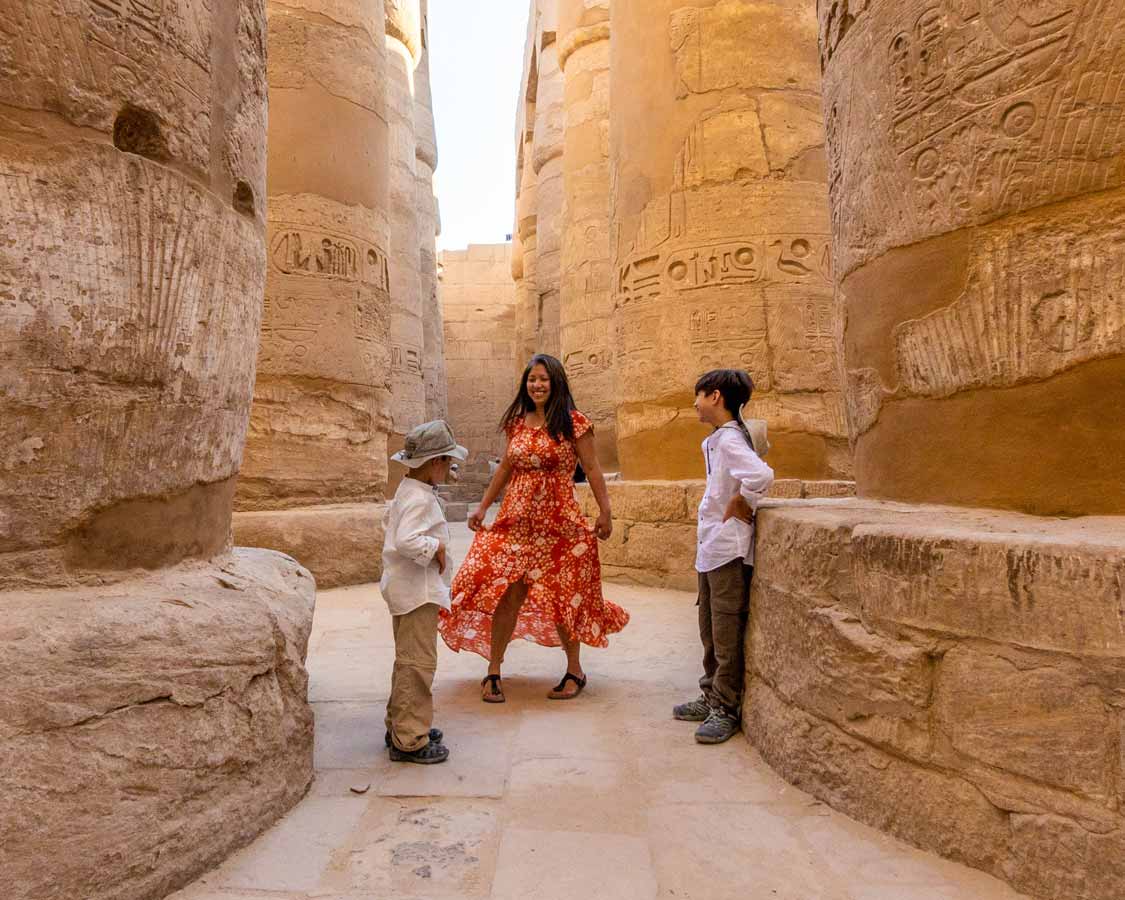
Where To Stay In Luxor, Egypt
Many visitors reach Luxor via a Nile River cruise. If that’s the case, you’ll likely have accommodations on the boat for at least part of your visit to Luxor.
Pavilion Winter Luxor
One of the most highly rated hotels for travelers and families in Luxor, Egypt, is the Pavilion Winter Luxor. This sprawling Luxor hotel has three restaurants and is conveniently located right in the heart of Luxor overlooking the Nile River. It’s easy walking distance from the Luxor Temple. You can check out their prices and availability here.
Luxor Palace
Just 3 km from many of the West Bank attractions in Luxor is Luxor Palace. This beautiful property has on-site gardens and offers both a-la-carte and continental breakfast options. You can check out their prices and availability here.
Best Time To Visit Luxor, Egypt
Choosing the best time to visit Luxor is important. The weather can vary in the region. And some months are pleasant, while others are uncomfortably hot. The best weather in Luxor usually occurs between October and April. Peak season in the city occurs in the months of December and January. If you visit during this time, you’ll find the prices at their highest levels. They usually start to increase in November and slowly come down after February. During these months, popular tourist sites in Egypt, including the Pyramids of Giza and Abu Simbel, will be at peak capacity.
What To Wear In Luxor, Egypt
The weather in Egypt can be quite hot during the day. But during the peak season, it can get chilly at night. It’s also a conservative country, and dressing respectfully is appreciated by locals. Long pants and long-sleeve shirts are recommended, as are closed-toed shoes. If you are visiting local religious sites, especially mosques, women should cover their hair and avoid wearing clothes that show off their shoulders. A simple, light shawl like this one packs up small and can be used when necessary.
Visiting Luxor, Egypt, With Kids
Luxor, Egypt, was one of our children’s favorite places to visit in Egypt. The sheer variety of experiences within the city is astounding. And with all the things to do in Luxor, Egypt, they never once got bored. Family travel in Egypt is phenomenal, and Luxor is no different. But do watch out for the typical Egyptian tourist traps that make the country a challenge to navigate.
I recommend visiting Luxor with kids. But follow these guides to help make your visit safe and fun.
- Teach your children not to accept “gifts” from vendors. These will often lead to the harassment of parents to pay for the gift.
- Toilets may not be well-stocked. Carry your own toilet paper with you. And be prepared to tip bathroom attendants.
- Watch out for steep drop-offs. Some of the temples have limited safety around the edges. Make sure your kids in Luxor stay well back from the edges.
Can You Drink The Water In Luxor?
Although Egyptians tout their water as safe, I recommend drinking filtered water while in the country to avoid illness. The easiest and most eco-friendly option is to bring a filtered water bottle. You can fill it up anywhere and be guaranteed fresh, clean water wherever you go. You can check out my list of the best filtered water bottles here.
Have you visited Luxor, Egypt? Let us know in the comments if you have any recommendations you would like to add to our list of places to visit or tips to make your Egyptian trip even more memorable.
Disclosure: We partnered with Traveline Egypt to make the most of our travels in Egypt. All opinions remain our own. Wandering Wagars is a participant in the Amazon Services LLC Associates Program, an affiliate advertising program designed to provide a means for sites to earn advertising fees by advertising and linking to amazon.com, amazon.co.uk, amazon.ca. Amazon and the Amazon logo are trademarks of Amazon.com, Inc. or its affiliates.
You May Also Like To Read:
Pin This Post For Later:
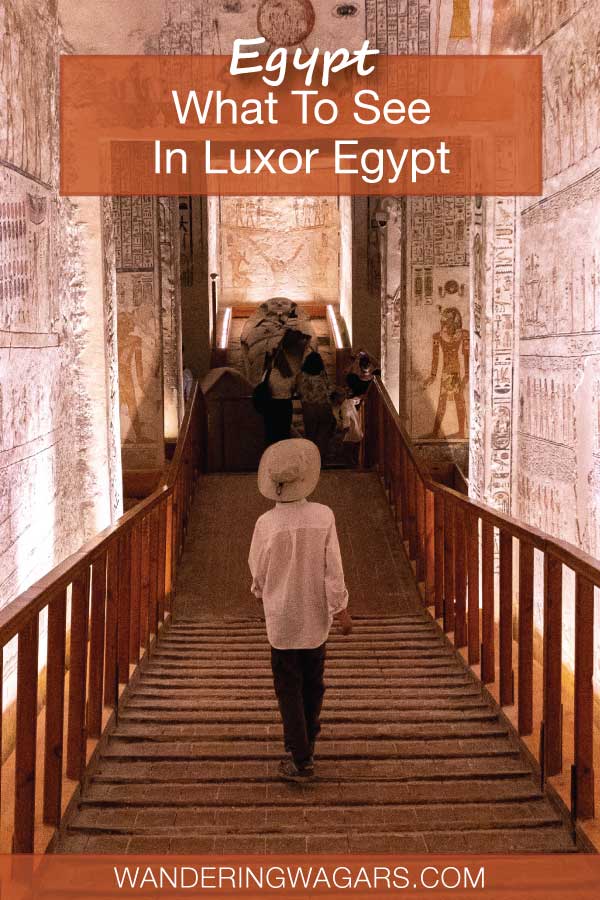

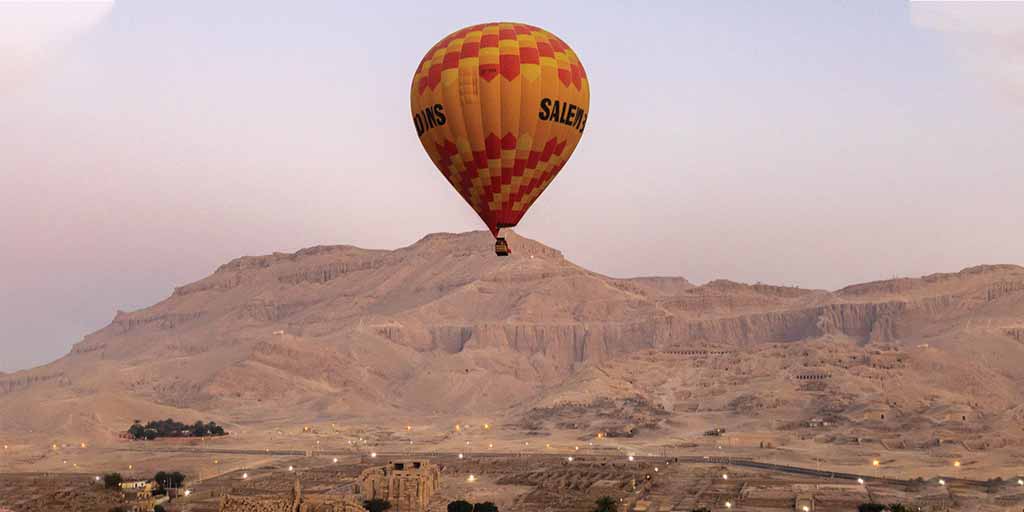
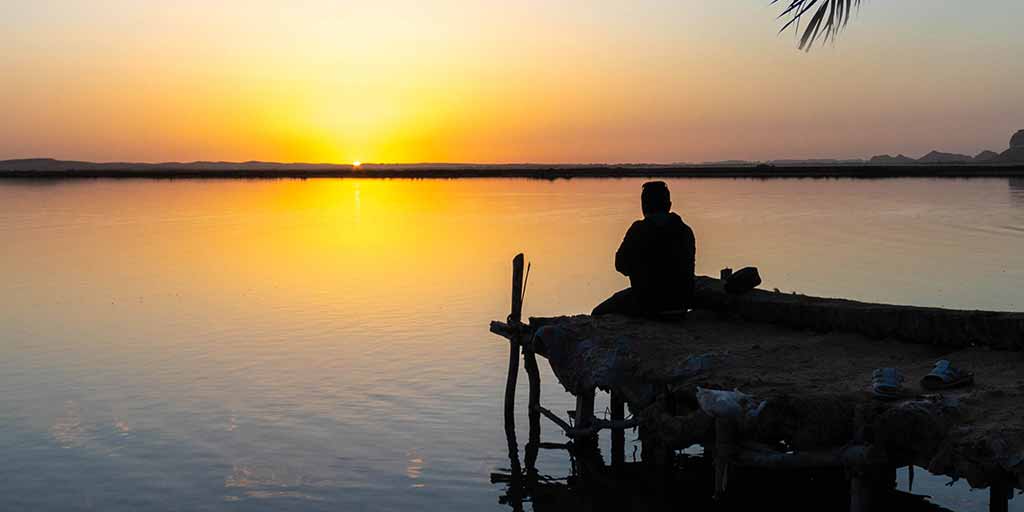
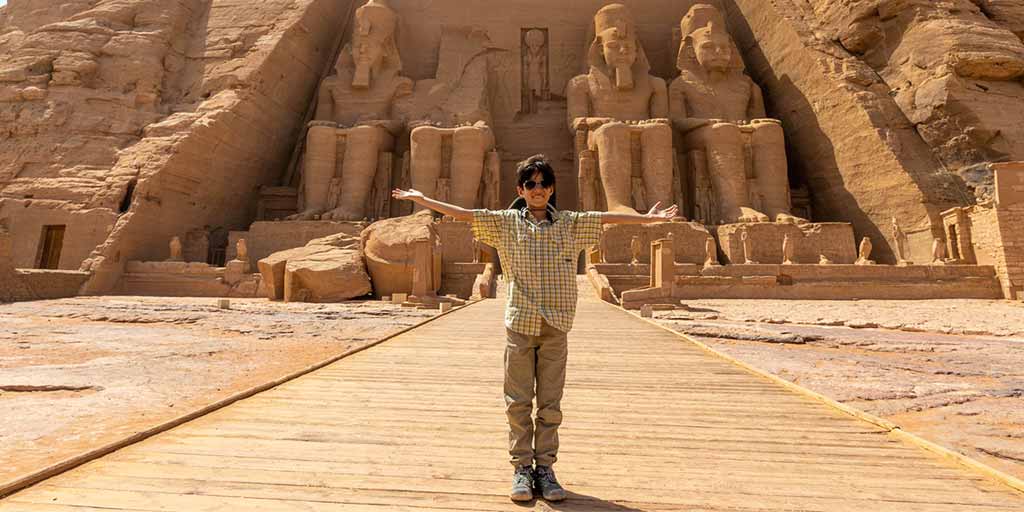
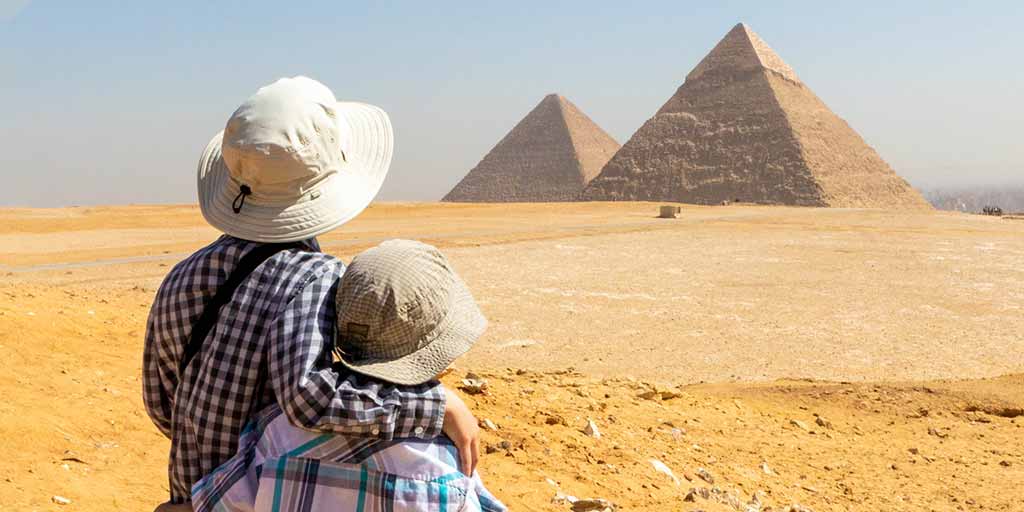
Lucy
Friday 21st of October 2022
Did you have any family extra vaccinations? We’re travelling there in a week and not yet had clear guidance from our GP…
Kevin Wagar
Saturday 5th of November 2022
Hi Lucy,
We did not get any special vaccinations for our visit to Egypt. We were up-to-date with our Hepatitis (recommended in many countries), and we were not traveling in regions affected by Malaria.